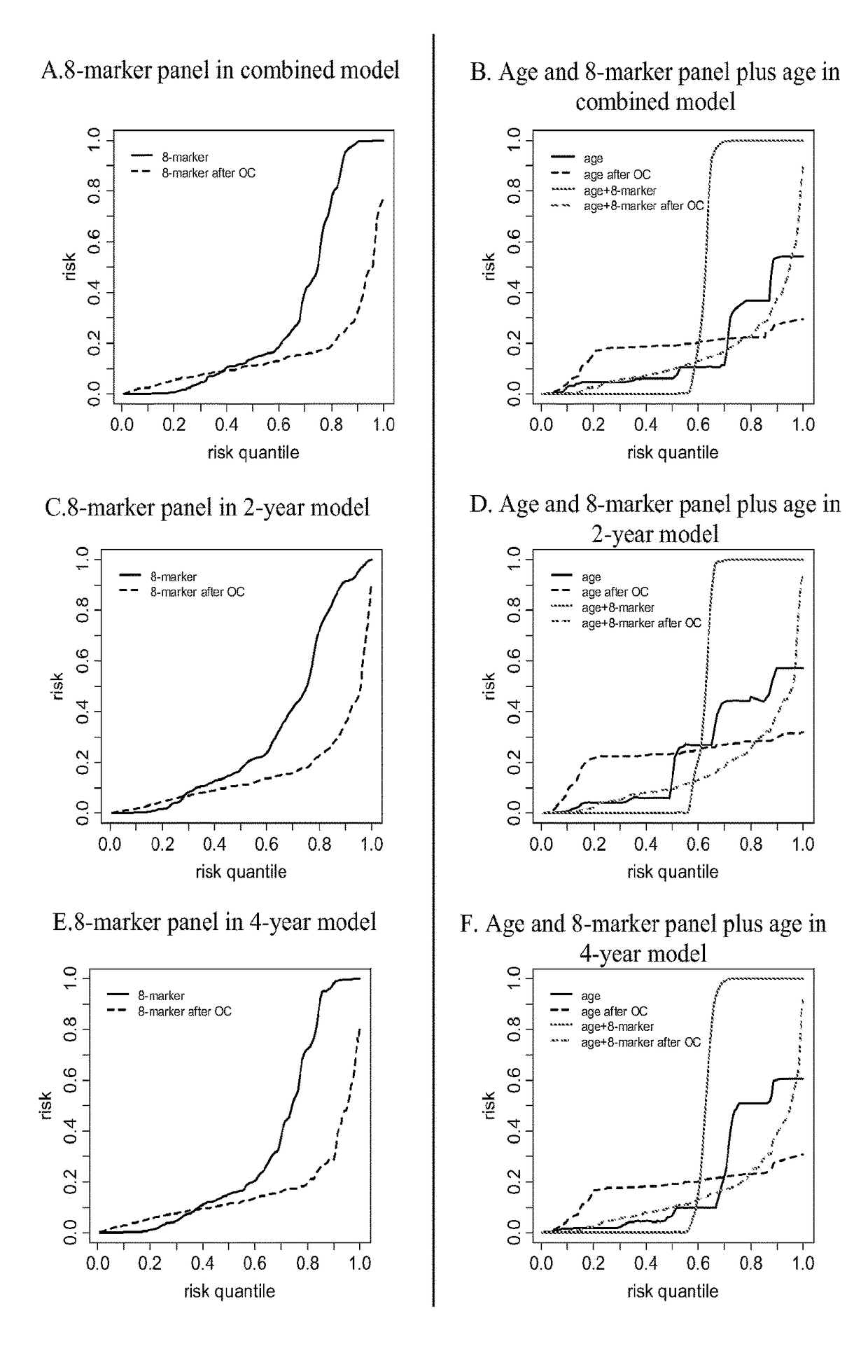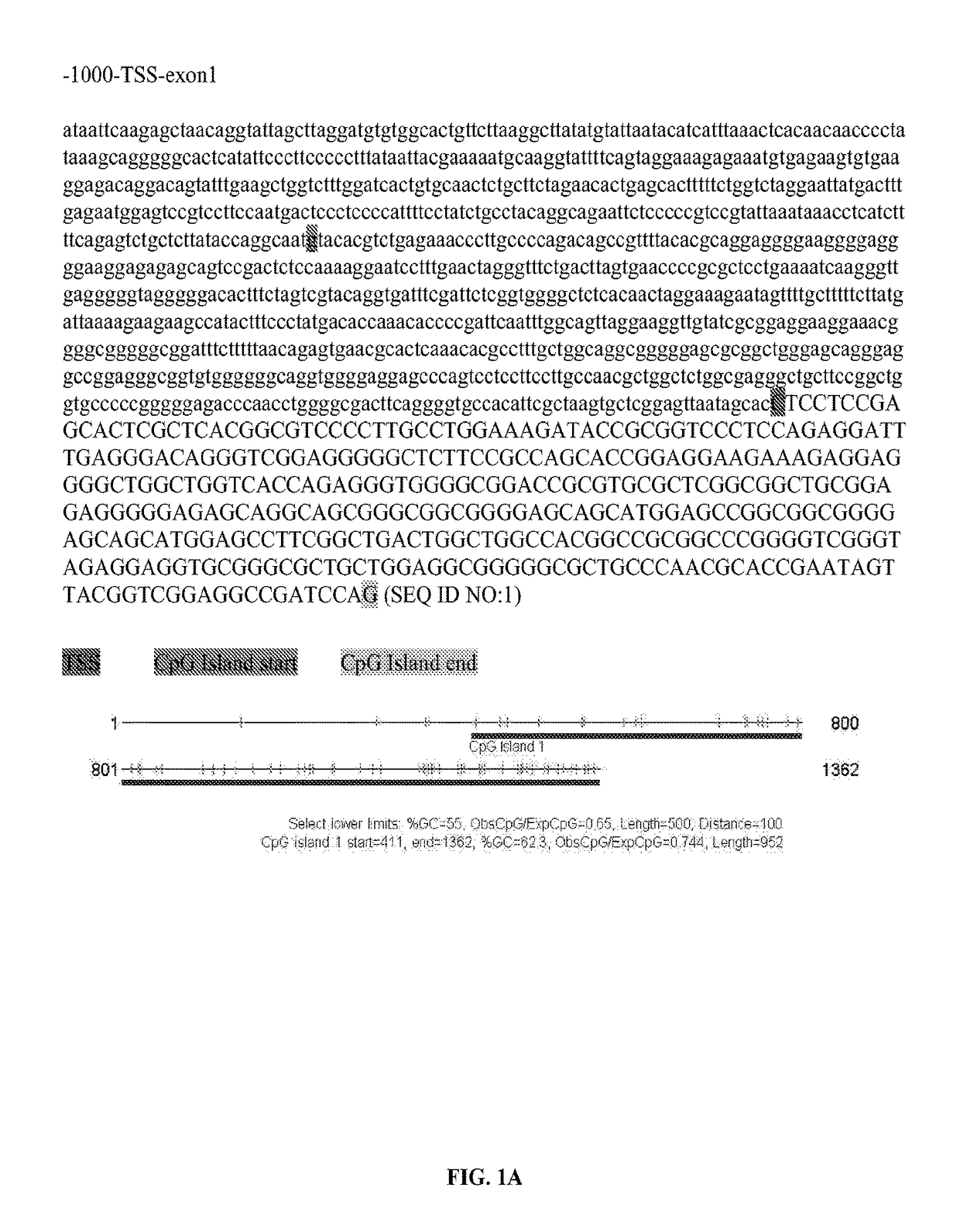Methods for predicting esophageal adenocarcinoma (EAC)
a technology of esophageal adenocarcinoma and esophageal cancer, which is applied in the field of methods for predicting esophageal adenocarcinoma, can solve the problems of limited predictive accuracy, high inter-observer variability, and only 1/200 patient-years of incidence of esophageal adenocarcinoma in be patients under surveillan
- Summary
- Abstract
- Description
- Claims
- Application Information
AI Technical Summary
Benefits of technology
Problems solved by technology
Method used
Image
Examples
example i
Studies of Methylation Levels and Frequencies of Nel-like 1 (NELL1), Tachykinin-1 (TAC1), Somatostatin (SST), and A-kinase Anchoring Protein 12 (AKAP12)
[0134]Methylation levels and frequencies of the above genes were studied, using real-time quantitative methylation-specific PCR (qMSP), in 259 endoscopic esophageal biopsy specimens of differing histologies. Prevalences were determined in each of the following histological categories: NE, BE, LGD, HGD or EAC. The methods used in these studies are, in general, similar or identical to those described in Example II. For details of these studies, see, e.g., the following references, all of which are incorporated by reference herein in their entirety: Jin et al. (2007) Oncogene 26, 6332-6340; Jin et al. (2007) Clin Cancer Res 13, 6293-6300; Jin et al. (2008) Cancer 112, 43-49; Jin et al. (2008) Cancer 112, 43-49; and Jin et al. (2008) Cancer Epidemiol Biomarkers Prey 17, 111-117. Among 10 genes evaluated, the five genes noted above were m...
example ii
Promoter Hypermethylation of CDH13 is a Common, Early Event in Human Esophageal Adenocarcinogenesis and Correlates with Clinical Risk Factors
[0135]CDH13 (also known as H-cadherin and T-cadherin), a member of the cadherin gene superfamily, was isolated and has been mapped to 16q24, a locus that frequently undergoes deletion in human cancers, including esophageal carcinoma. In contrast to other known cadherins such as E-cadherin, N-cadherin, and P-cadherin, which are transmembrane proteins, CDH13 lacks conventional transmembrane and cytoplasmic domains and is attached to the plasma membrane through a glycosyl phosphatidyl inositol anchor. Several studies have suggested that CDH13 functions as a tumor suppressor gene and possesses potent antitumor activity in several human cancers both in vitro and in vivo. Hypermethylation of CDH13 has been described in many human cancers, including ESCC. Prior to the present studies, however, hypermethylation of CDH13 in precancerous lesions such as ...
example iii
A Multicenter, Double-blinded Validation Study of Methylation Biomarkers for Progression Prediction in Barrett's Esophagus
[0163]Esophageal adenocarcinoma risk in Barrett's esophagus (BE) is increased 30- to 125-fold versus the general population, yet neoplastic progression occurs rarely in BE. Molecular biomarkers would stratify patients for more efficient surveillance endoscopy and improve early detection of progression. We therefore performed a retrospective, multicenter, double-blinded validation study of 8 BE progression prediction methylation biomarkers. Progression or nonprogression were determined at 2 years (tier 1) and 4 years (tier 2). Methylation was assayed in 145 nonprogressors (NPs) and 50 progressors (Ps) using real-time quantitative methylation-specific PCR. Ps were significantly older than NPs (70.6 vs. 62.5 years, p<0.001). We evaluated a linear combination of the 8 markers, using coefficients from a multivariate logistic regression analysis. Areas under the ROC cu...
PUM
| Property | Measurement | Unit |
|---|---|---|
| length | aaaaa | aaaaa |
| Tm | aaaaa | aaaaa |
| length | aaaaa | aaaaa |
Abstract
Description
Claims
Application Information
 Login to View More
Login to View More - Generate Ideas
- Intellectual Property
- Life Sciences
- Materials
- Tech Scout
- Unparalleled Data Quality
- Higher Quality Content
- 60% Fewer Hallucinations
Browse by: Latest US Patents, China's latest patents, Technical Efficacy Thesaurus, Application Domain, Technology Topic, Popular Technical Reports.
© 2025 PatSnap. All rights reserved.Legal|Privacy policy|Modern Slavery Act Transparency Statement|Sitemap|About US| Contact US: help@patsnap.com



